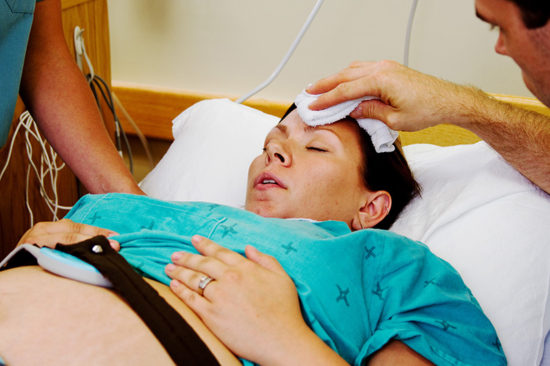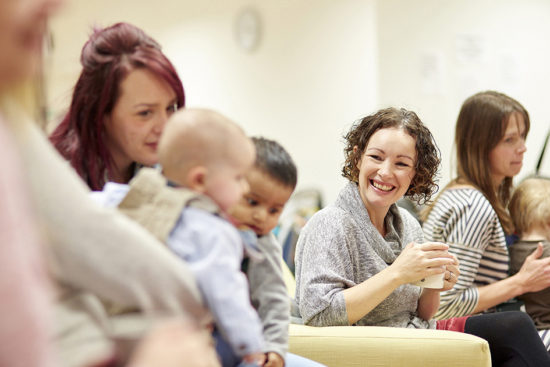We look at assisted birth – why a ventouse or forceps delivery might be recommended, what happens and how you may feel.
An assisted or instrumental birth is when a ventouse or forceps are used to help a woman give birth. Currently, about one in eight babies in the UK are born with the help of these specially-designed instruments (see box), many of them first babies.
A ventouse (vacuum extractor) is an instrument that is attached to the baby’s head by suction. A soft or hard plastic or metal cup is attached by a tube to a suction device.
Forceps are smooth metal instruments that look like large spoons or tongs. They’re curved to fit around the baby’s head.
Knowing what to expect and understanding why an assisted birth might be recommended can help you feel more confident about the process – especially if you’re feeling tired because of a long or challenging labour, or if thinking time suddenly disappears because of concerns about the baby.
Sometimes, when the second stage of labour is very long, an assisted birth is suggested because:
As with any other medical intervention being offered, you can say ‘no’ to an assisted birth.
If your doctor thinks that an assisted birth is possible but could be difficult, you will be moved to an operating theatre in case a caesarean section is then needed.
“You may find there is little time to talk but, if there is, you can always ask about alternatives, such as changing position, squatting or using a birthing stool, before giving consent,” says NCT antenatal teacher and midwife, Dot Parry.
Some women also wonder why an assisted delivery is recommended instead of a caesarean. “An assisted birth is offered first because a caesarean involves major surgery,” explains Dot.
“And sometimes it is quicker for a baby to be born using ventouse or forceps than having a caesarean, which is important if the baby is in trouble.”
You will be asked to lie on your back with your feet in stirrups. The midwife or obstetrician will examine you, and your bladder emptied with a catheter. If you haven’t already had an epidural you will be offered one, or a single spinal injection or local anaesthetic to numb the area around the vagina.

You may also need an episiotomy (cut in the back wall of the vagina) to enlarge the vaginal opening.
In a ventouse delivery, the obstetrician or specially trained midwife will attach a suction cup to your baby’s head and gently pull, along with your contractions, to help your baby be born.
An episiotomy is not always necessary and women are less likely to experience vaginal tearing than they would with forceps.
In a forceps delivery, the forceps are gently positioned around the baby’s head until the next contraction when you will be asked to push and your baby carefully pulled. An episiotomy is usually required.
It might be helpful to think about the support you can give your partner if forceps or ventouse are used. This could be offering reassurance if this is a change to your birth plan or simply holding her hand during the birth.
Some partners have said they found it difficult watching the forceps and ventouse being used so also consider where you might want to stand during the birth.
Some parents-to-be worry that their baby may be harmed during an assisted birth. But any effects are likely to be short term. Forceps can cause bruising while a ventouse may temporarily affect the shape of a baby’s head.
Small cuts on a baby’s face and head may also occur but generally fade quickly.
If you are concerned, talk to your health visitor or GP.
It’s normal to feel bruised and sore after birth, particularly if you had an assisted birth.
Help is available, so don’t feel afraid to ask if you do experience any difficulties or complications.
In particular, stitches and swelling after an episiotomy or tearing may make it painful when you go to the toilet but healing is usually quick.
Remember to keep the area around your vagina clean to avoid infection.
Most women will recover from an assisted birth within a few weeks but some may experience complications, such as severe vaginal tearing, blood clots and urinary or anal incontinence.
Sometimes, an assisted birth can leave new parents feeling as if the situation was taken out of their hands. If this is how you feel, it can help to ask the obstetrician or midwife before you leave hospital about what happened and why it was necessary.

Some women and their partners might also want to talk about the emotional impact after they have gone home. If you did an NCT antenatal course, you could get in touch with your antenatal teacher to talk this through.
You could also call our Shared Experiences Helpline on 0300 330 0700 where our enquiries team will put you in touch with a volunteer who has gone through a similar experience and is able to offer understanding and a listening ear.
It’s unlikely you will need an assisted birth with subsequent babies. Most women who have an assisted vaginal birth deliver spontaneously next time round.
Find out more about labour and birth.
Call NCT’s helpline 0300 330 0700 for practical and emotional support in many areas of pregnancy, birth and early parenthood.